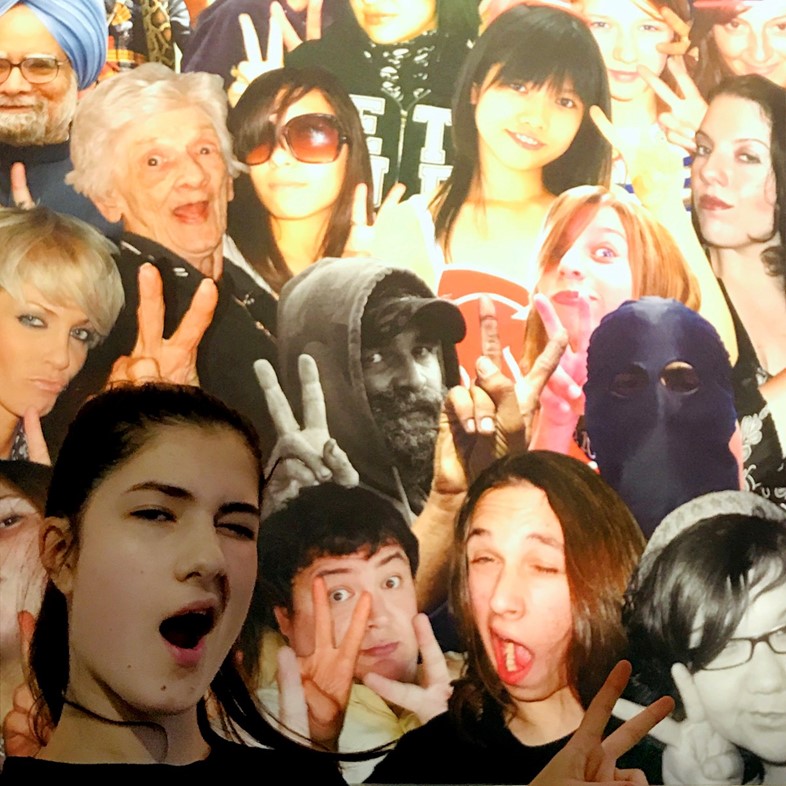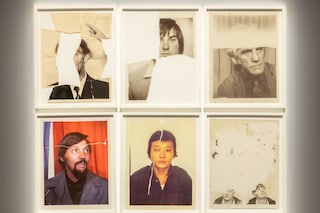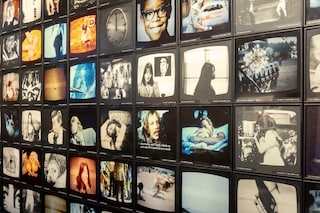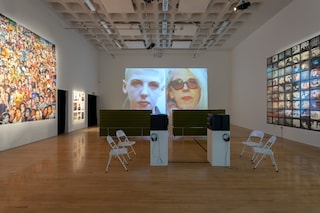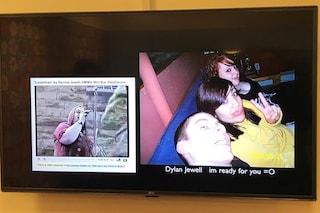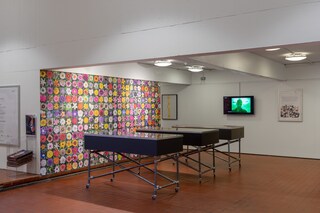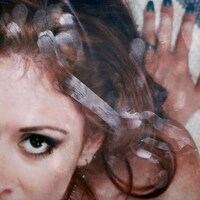From photos and videos spanning 40 years
In 1978, mixed media artist Dick Jewell repurposed a collection of discarded photo booth images into his book, Found Photos. The volume captured the spontaneity of people he didn’t know and would probably never see again. It echoed an earlier project, where he sent a self-portrait to all the fellow “Jewells” he could find in London and requested a photo in return. The use of strangers’ images would become a theme common to his entire career, now which hosts over 40 years of work.
Jewell’s innate interest in people is evident. He reflects, “I’m fascinated with the human condition, the world over, our traits, our cultures, and the way we physically express ourselves, our similarities and differences in expressing emotions, and how visual awareness is crucial in understanding ourselves. It makes no difference if we know a person or not; we all interact in similar ways.”
In bringing together individual images to form large-scale works of art, Jewell creates new narratives. In Dermot & Natasha, 2005, a montage of TV clips featuring two newsreaders plays on repeat. Jewell selected the quieter, non-verbal interactions and edited them to music, creating an intimacy between the two. In The Box, 1980, nearly 200 snapshots comprise a mosaic-like network of TV screens. The moments were separate but connected through their occurrence over a seven day period.
With Jewell’s work, which bridges the 1970s to the 2000s and beyond, viewers are confronted with a juxtaposition: the nostalgia of his signature photo booth images versus the transience of photos today – as a result of “selfie culture” and more broadly social media. According to Jewell, it’s not the process that has changed. “The practice is essentially the same. My work is a comment on how imagery is being employed in society, but online, the context of imagery has expanded considerably – plus, it’s on a global scale.”
But the difference cuts even deeper. “The photo booth was in many ways the forerunner of the selfie, and my Found Photos, from those discarded around booths, by people who were unwilling to accept that image of themselves, is a thing of the analogue past,” Jewell explains. Now, when someone takes an unsatisfactory photo of themselves, they can simply press “delete”, and it can be replaced within seconds by twenty more flattering variations. Where film photos offer tangible evidence of imperfection, selfies encourage faultlessness.
The change does have its benefits, though as Jewell appreciates the choice it’s given him. “The development of digital cameras and the Internet with the consequential explosion in the sheer amount of images to ponder has been a big plus for me as I’m an absolute glutton for images.” His recent solo exhibition, Now & Then, proved this. In film, photography and photo-collage installations, viewers were offered intimate glimpses into hundreds of unknown lives, through photos intended to be personal (Found Photos, 1978), and those featuring familiar, mimicked “peace sign” poses (War & Peace, 2019).
“We’ve certainly gained more options in every sense,” he maintains, “Long gone are the days of Doris Jewell, an octogenarian living in Barnes who replied to my asking for a photo in 1974 by saying there were no photos of her in existence – but I was welcome to go and take one of her.”
